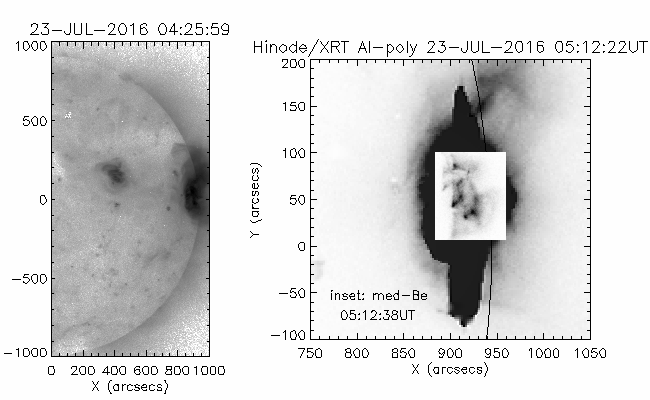
Click for movie. Also available on YouTube.
Together, they made the Sun great again! -- part II
|
As we see in the previous article, the Sun was vigorous in mid July, 2016 thanks to the competing active regions, AR 12565 and 12567. The activity reached a climax on 23 July, when AR 12565 produced three M-class flares (M5.0 at 01:46, M7.6 at 05:00, and M5.5 at 05:27UT). Fortunately, the XRT had excellent data coverage for the second (M7.6) event, while the observation of the other two events were interrupted by satellite's passage in the shadow of the Earth or the passage in the region of concentrated high energy particles.
The XRT observed the flare with thin and thick filters. The thin filters
can see faint structures but are easily saturated.
The thick filters are, on the other hand, suitable for looking at the most
energetic region (the flare kernel), but hard to see the surroundings.
The movie shows the composite of a thin- and a thick-filter images
taken closely in time. That way, we can see the flare kernel and the
faint surroundings in a single frame.
|
(Prepared by Aki Takeda)
| Back | Archive | Next |